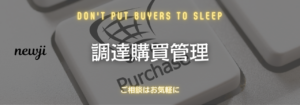- お役立ち記事
- Design and product manufacturing methods that take advantage of the characteristics of tanned leather [Leather products market]

Design and product manufacturing methods that take advantage of the characteristics of tanned leather [Leather products market]

目次
Understanding Tanned Leather
Tanned leather is a fascinating material that has been used for centuries to create durable and stylish products.
The process of tanning involves treating animal hides to prevent decomposition, resulting in a material that is both flexible and tough.
Tanned leather is known for its unique characteristics such as its rich texture, strength, and ability to develop a beautiful patina over time.
Understanding these characteristics is crucial for designing and manufacturing products that truly harness the beauty and functionality of tanned leather.
Types of Tanning Processes
There are several tanning processes, each imparting different qualities to the final product.
The most common processes include vegetable tanning, chrome tanning, and aldehyde tanning.
Vegetable tanning uses natural tannins found in plants, making the leather firm and durable.
This process is environmentally friendly and results in leather that ages beautifully, acquiring a unique character with use.
Chrome tanning, on the other hand, involves the use of chromium salts to soften the leather.
This method is faster and produces a supple leather that holds its shape well.
However, it is less eco-friendly than vegetable tanning.
Aldehyde tanning is used for leather that requires a high degree of softness and flexibility.
This method is often used for making softer products such as gloves and clothing.
Designing Leather Products
When designing leather products, it’s important to consider both the functional and aesthetic elements.
Functionally, tanned leather is appreciated for its durability and resistance to wear and tear.
Products such as bags, belts, and shoes benefit immensely from these properties.
Aesthetically, leather offers a classic, timeless appeal.
Designers often play with the texture, color, and natural variations in the leather to create unique products.
Innovative Uses of Tanned Leather
Innovation in leather design is about pushing the boundaries of how leather can be used.
Designers are constantly exploring new techniques such as embossing, laser cutting, and dyeing to create modern, intricate patterns.
Another innovative use of tanned leather is in the integration with technology.
For example, leather is now being used in the crafting of smart accessories like phone cases and tech-friendly wallets.
These products meld traditional craftsmanship with modern functionality, appealing to a wide range of consumers.
Manufacturing Leather Products
The manufacturing process of leather products begins with the careful selection of leather, considering its quality, thickness, and texture.
This selection is crucial as it affects the final product’s feel and longevity.
Cutting is the next step, where precision is key.
Skilled artisans use tools to cut the leather into the desired shapes, ensuring minimal waste and optimal use of the material.
Once cut, the leather pieces are stitched together.
This process requires great attention to detail to ensure even seams and strong joins.
Finally, products are treated and finished to enhance their appearance and durability.
Finishes can include polishing, waterproofing, or applying a sealant.
Challenges in Leather Manufacturing
Leather manufacturing carries its own set of challenges.
Sourcing high-quality hide can sometimes be difficult due to environmental and ethical concerns.
Manufacturers strive to ensure sustainability while meeting consumer demands for transparency and ethical production practices.
Additionally, leather production can be labor-intensive.
Skilled craftsmanship is necessary to maintain high standards, which can increase production costs.
Despite these challenges, the appeal of leather products remains strong, driven by their lasting quality and timeless style.
The Leather Products Market
The market for leather products is robust and dynamic, spanning numerous industries from fashion to interior design.
Consumers are increasingly interested in products that not only look good but also offer longevity and ethical manufacturing.
There’s a growing demand for leather products that incorporate sustainable practices.
Consumers are drawn to brands that utilize vegetable tanning and transparent sourcing practices.
Globally, the leather market continues to grow, driven by innovations in design and technology.
The integration of smart features and sustainable approaches is likely to shape future trends in the industry.
Conclusion
Designing and manufacturing leather products that leverage the unique properties of tanned leather can lead to the creation of exceptional items.
The balance between traditional techniques and modern innovations ensures that leather remains a sought-after material.
Navigating the challenges of the leather market requires a commitment to quality, sustainability, and creativity.
By understanding the nature of tanned leather and employing effective manufacturing methods, brands can continue to thrive in this timeless industry.
 資料ダウンロード
資料ダウンロード
QCD管理受発注クラウド「newji」は、受発注部門で必要なQCD管理全てを備えた、現場特化型兼クラウド型の今世紀最高の受発注管理システムとなります。
 NEWJI DX
NEWJI DX
製造業に特化したデジタルトランスフォーメーション(DX)の実現を目指す請負開発型のコンサルティングサービスです。AI、iPaaS、および先端の技術を駆使して、製造プロセスの効率化、業務効率化、チームワーク強化、コスト削減、品質向上を実現します。このサービスは、製造業の課題を深く理解し、それに対する最適なデジタルソリューションを提供することで、企業が持続的な成長とイノベーションを達成できるようサポートします。
 製造業ニュース解説
製造業ニュース解説
製造業、主に購買・調達部門にお勤めの方々に向けた情報を配信しております。
新任の方やベテランの方、管理職を対象とした幅広いコンテンツをご用意しております。
 お問い合わせ
お問い合わせ
コストダウンが利益に直結する術だと理解していても、なかなか前に進めることができない状況。そんな時は、newjiのコストダウン自動化機能で大きく利益貢献しよう!
(β版非公開)



